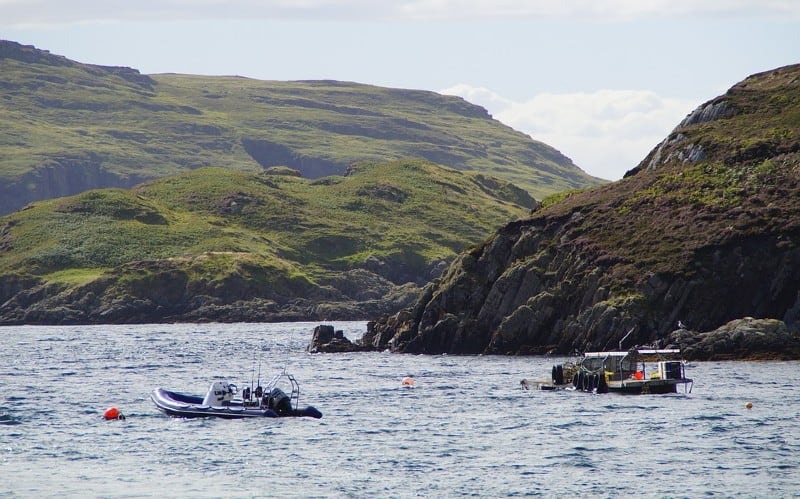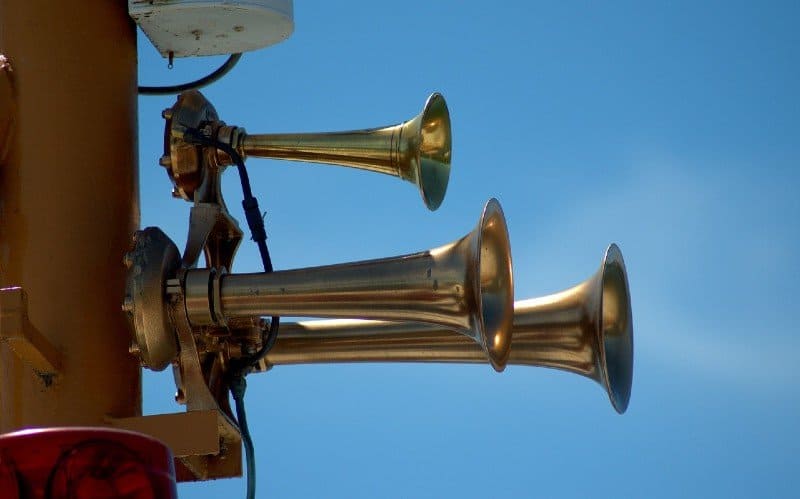according to the navigation rules what factor should be considered
Boat Safe is a community supported site. We may earn committee from links on this page, but we have confidence in all recommended products.
The rules of boat navigation are critical for ensuring safe canoeing. Part of being a responsible boat owner is knowing the rules of the route. That term, rules of the road refers to the Collision Avoidance Regulations or COLREGS.
The rules of the route are just what they audio like. They word just equally the rules of the route on land dictate the safest style to drive. They provide a standard that all boaters can follow. The ultimate goal is to become where you're going and avoid a collision.
Obviously whatever fourth dimension someone presents you with rules it can exist intimidating. That goes for rules of navigation to rules of the route and beyond. There'southward a fear y'all'll miss or forget something.
All you can do is your best. Learn these rules of navigation and put them in practice on the water. Exist a responsible boat operator and do your best.
What are the Rules of Navigation?

The rules of navigation cover a range of topics. Anything you lot need to know about safely navigating a gunkhole is covered here. You lot can go your own cost of the rules of the road from the U.South. Regime Printing Office. They get-go with some simple definitions y'all demand to be familiar with. Here are some of the more than important ones.
Vessel: Nearly people use vessel to refer to any boat. The technical definition of a vessel is any craft capable of beingness used on the h2o. A vessel does not need to meet and requirements beyond that.
Power Driven Vessel: The same as in a higher place simply in this instance the vessel has a motor. Any vessel propelled by powered mechanism.
Sailing Vessel: This is any vessel that does not utilize motorcar propulsion. Instead, it is a vessel that uses sails lonely. A sailboat that has a motor is nevertheless a power-driven vessel.
Right of Way: This ways your vessel has the right and duty to maintain course and speed.
Stand-On Vessel: This is the vessel that has the right of way.
Give Way Vessel: This is the vessel that should keep clear of the stand on vessel.
There is much more to the rules than definitions, of form. Avoiding standoff risk is a major part. As are the safety and actions you need to maneuver around other boats. Safe speed and proper pecking social club for right of fashion. Let'due south accept a look at some of the important features of the rules of the road.
Inland Rules vs International Rules
There are two sets of rules depending on where your boat is located. Charts can show y'all the demarcation line between inland waters and international waters. Most recreational boating is done in inland waters. For that reason, the rules nosotros present in here will be inland too.
The difference between the two can be significant. Sound signals, for case, are very different from inland to international. If you're non familiar with both, it can be confusing and potentially unsafe.
How to Avoid a Collision

Collisions between boats are all too mutual. The rules of the route are meant to help lessen these accidents. They can be quite serious resulting in damage, injury, and even death.
Speed is a major cistron in standoff avoidance. Just similar in cars, reduced speed equals reduced chance of collision. You should be familiar with all the rules of the road to aid you understand how to avert a collision. There are some that are more relevant than others.
Rule ii: Due regard shall be given to all dangers of navigation and collision. This rule allows the boater to depart from the rules as necessary. That means to avoid the firsthand danger of collision. Your duty above all else is to avert collisions. That ways if yous have the correct of way and another boat is not respecting that, give mode.
Rule four: Every vessel shall at all times maintain a proper lookout using sight and hearing. Every bit well as by all available means appropriate in the prevailing circumstances. This is to brand a full appraisal of the state of affairs and of the possible risk of collision. You need to be enlightened at all times of what is going on around y'all.
Rules 6: Every vessel shall at all times proceed at a safe speed. The speed should let so that she tin have proper and effective action to avoid collision. And exist stopped within a distance appropriate to the prevailing circumstances and atmospheric condition. That means the following needs to be considered:
- Visibility
- Traffic density
- Maneuverability of the vessel with special reference to stopping altitude and turning ability
- Groundwork light such as from shore lights at night
- The state of the air current, sea and current
- Proximity of navigational hazards
- The typhoon in relation to the available depth of water
Rule vii: Every vessel shall use all available ways to determine if risk of collision exists. If there is any doubt, assume that it does exist. Take a chance of collision shall be deemed to exist if the compass begetting from your vessel to an budgeted vessel does not change. Constant begetting decreasing range (CBDR) is the term we use to describe this situation.
This is very similar to rule two in that information technology is on your to avert collision. Never assume the other boat is going to avoid you lot. You must avert them besides.
Rule 14: Head-On State of affairs. If you are in a vessel that is approaching another head-on y'all shall alter grade. Head to starboard so you each volition laissez passer port to port. You should give the audio signal of one short blast to indicate that this is your intention also.
There may be times when this is not possible. Maybe an obstruction or other such outcome. If that is the case yous can pass starboard to starboard. Bespeak your intent to exercise then with two short blasts. Look for the other vessel to render the signal. This ways they understand.
Rule 15 : Crossing State of affairs. This applies When two power driven vessels are crossing. To avoid gamble of collision, the vessel which has the other vessel on her starboard side shall proceed out of the way.
Sailing Vessels or Vessels With Paddles

Vessels non under power have the correct of fashion over those that do. It is analogous to how pedestrians have the right of fashion over cars on the road. The only time this is non true is if the sailing vessel is passing a power driven vessel. In that case, it becomes the give way vessel.
Navigating Narrow Channels
The rules of the road state y'all demand to stick to starboard in narrow channels. Avoid vessels constrained past draft. Never anchor in a channel unless yous have no pick.
Through the Great Lakes and Western rivers, downbound vessels have the right of way. That means vessels going with the current. This is because it is easier for the upstream vessel to maneuver.
Sound 1 prolonged boom if yous are approaching a bullheaded bend. If some other boat answers then proceed based on the above navigation rules.
Commercial Vessels
You demand to do your best to avert commercial vessels and commercial lanes. You will ever need to requite fashion to large shipping vessels. If unavoidable, do your best to get out of the way as shortly as possible.
- Cross ship channels at right angles every bit rapidly as possible
- Use light and sound signals and then your are seen and heard
- Go along your VHF radio on Channel xvi
- Make sure everyone on board has a PFD on.
Using Sound Signals

Part of responsible boat treatment is learning sound signals. These are a key aspect of the rules of the route. They warning other boaters to your intentions and so they can answer accordingly. Sounds signals are made with a horn or whistle. They consist of ane second brusque blasts and iv-half-dozen second prolonged blasts.
Inland rules and international rules differ on sound signals. Inland rules dictate the audio happens earlier the maneuver. International rules require the sound as the maneuver happens.
Navigation Signals
One Short Nail: This tells another boat y'all program to pass on your port side.
Two Brusk Blasts: This tells another boat y'all plan to pass on your starboard side.
Three Short Blasts: Utilise this signal to tell other vessels you are using astern propulsion or going in reverse.
Warning Signals
Ane Prolonged Blast: This warns other boats y'all are approaching. Utilise this when exiting a slip, or navigating a blind bend.
Five Short Blasts: This can indicate danger to other boats. It tin can as well answer to another boat saying you don't empathise or disagree with their signal. This can warn them of danger likewise. For instance, if their maneuver will crusade them to run aground.
Restricted Visibility Signals
One Prolonged Blast: This should be repeated every 2 minutes for power-driven vessels. Restricted visibility can be either night or fog.
I Prolonged Blast plus Two Curt Blasts: This should be repeated every 2 minutes for sailing vessels.
What is Comdtinst 16672.2 Series?
Comdtinst 16672.ii serial refers to the Navigation Rules of the Road, published past the U.S. Coast Guard. That's the official title of the certificate and you tin can request one from the U.South. Government Printing Part. You can also admission the U.S. Government Printing Office on their website at www.navcen.uscg.gov.
The Lesser Line
The rules of navigation are key to responsible boating. They are something any responsible boater needs to be familiar with. Information technology is not expected that you lot will memorize them past any means. However, yous should exist aware of them.
As simple equally some of the rules are they have a purpose. They are meant to go on you safe. The U.s.a. Coast Guard and others have developed them specifically for this purpose.
smiththerecomed1949.blogspot.com
Source: https://www.boatsafe.com/navigation-rules/
0 Response to "according to the navigation rules what factor should be considered"
Post a Comment